Ingo Lütkebohle
ros2_tracing: Multipurpose Low-Overhead Framework for Real-Time Tracing of ROS 2
Jan 02, 2022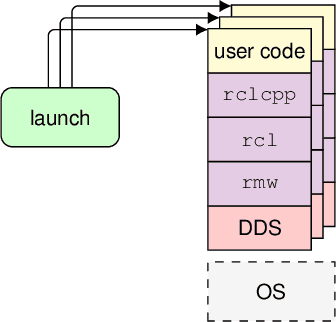

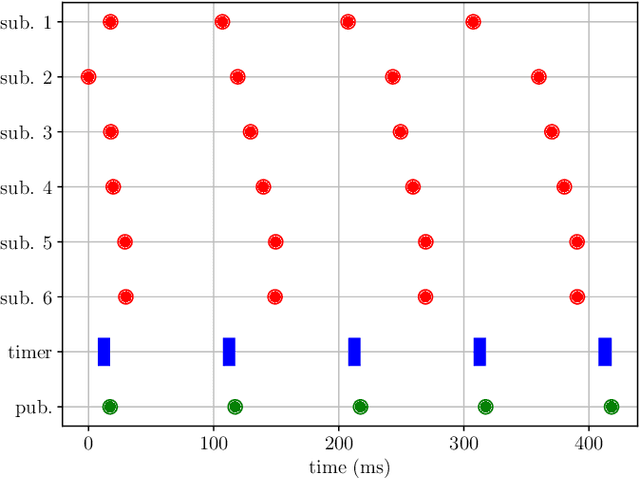
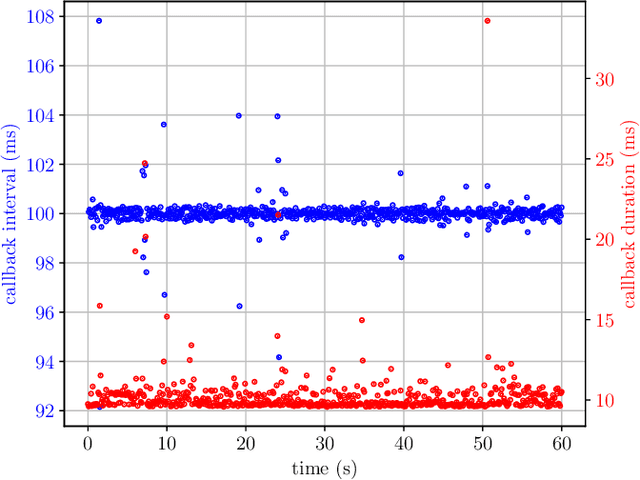
Abstract:Testing and debugging have become major obstacles for robot software development, because of high system complexity and dynamic environments. Standard, middleware-based data recording does not provide sufficient information on internal computation and performance bottlenecks. Other existing methods also target very specific problems and thus cannot be used for multipurpose analysis. Moreover, they are not suitable for real-time applications. In this paper, we present ros2_tracing, a collection of flexible tracing tools and multipurpose instrumentation for ROS 2. It allows collecting runtime execution information on real-time distributed systems, using the low-overhead LTTng tracer. Tools also integrate tracing into the invaluable ROS 2 orchestration system and other usability tools. A message latency experiment shows that the end-to-end message latency overhead, when enabling all ROS 2 instrumentation, is below 0.0055 ms, which we believe is suitable for production real-time systems. ROS 2 execution information obtained using ros2_tracing can be combined with trace data from the operating system, enabling a wider range of precise analyses, that help understand an application execution, to find the cause of performance bottlenecks and other issues. The source code is available at: https://gitlab.com/ros-tracing/ros2_tracing.
Modeling Non-Functional Application Domain Constraints for Component-Based Robotics Software Systems
Jan 11, 2016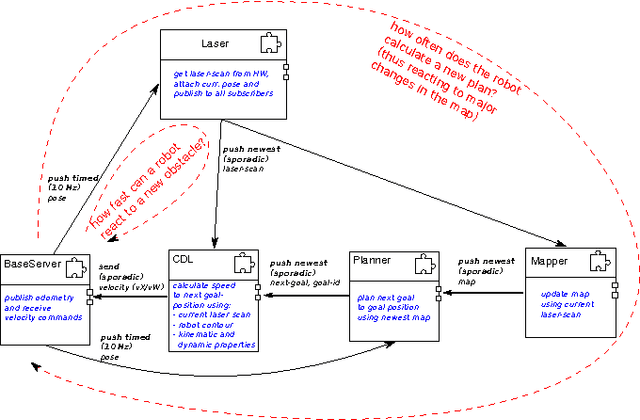
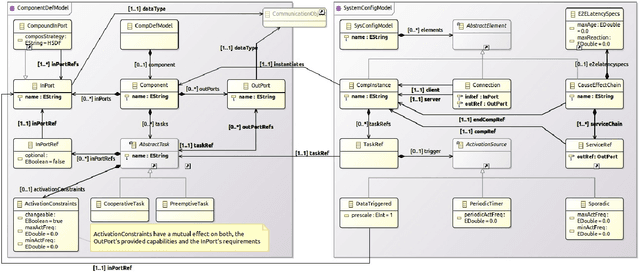
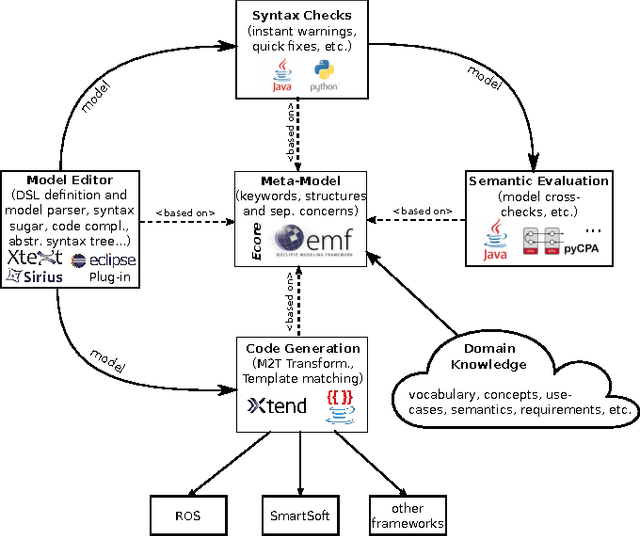
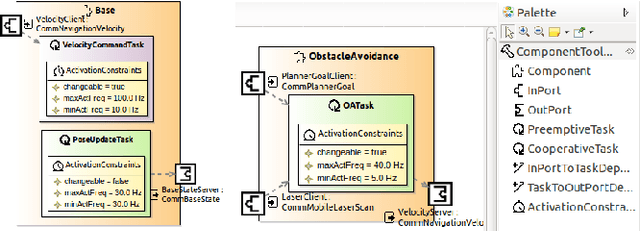
Abstract:Service robots are complex, heterogeneous, software intensive systems built from components. Recent robotics research trends mainly address isolated capabilities on functional level. Non-functional properties, such as responsiveness or deterministic behavior, are addressed only in isolation (if at all). We argue that handling such non-functional properties on system level is a crucial next step. We claim that precise control over application-specific, dynamic execution and interaction behavior of functional components -- i.e. clear computation and communication semantics on model level without hidden code-defined parts -- is a key ingredient thereto. In this paper, we propose modeling concepts for these semantics, and present a meta-model which (i) enables component developers to implement component functionalities without presuming application-specific, system-level attributes, and (ii) enables system integrators to reason about causal dependencies between components as well as system-level data-flow characteristics. This allows to control data-propagation semantics and system properties such as end-to-end latencies during system integration without breaking component encapsulation.
 Add to Chrome
Add to Chrome Add to Firefox
Add to Firefox Add to Edge
Add to Edge